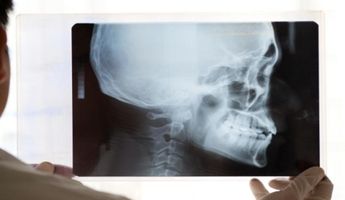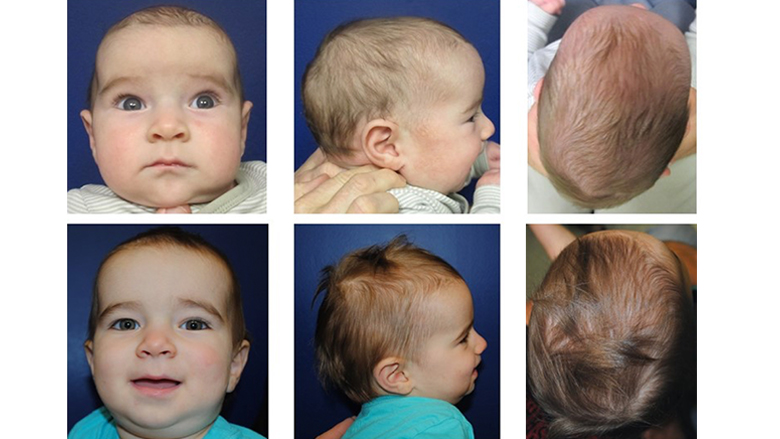Cranioplasty in Munich
Search and Compare the Best Clinics and Doctors at the Lowest Prices for Cranioplasty in Munich

Find the best clinics for Cranioplasty in Munich
No pricing info available
Tunisia offers the best prices Worldwide
Price: $ 1,439
From 166 verified reviews
Martin xxx, 22 September 2020
Von Anfang bis Ende sehr freundliche und kompetente Mitarbeiter.
WHY US?
At Medijump, we're making medical easy. You can search, compare, discuss, and book your medical all in one place. We open the door to the best medical providers worldwide, saving you time and energy along the way, and it's all for FREE, no hidden fees, and no price markups guaranteed. So what are you waiting for?

Free

Best Price

Widest Selection

Risk-Free
What you need to know about Cranioplasty in Munich

A Cranioplasty is a laser-focused surgical procedure that works to repair a defect in the skull. Typically, it's a necessary step after brain surgeries or even following a traumatic injury. The whole purpose of a cranioplasty is to provide a line of defence for your brain. The surgeon achieves this by remodelling or mending a damaged part of the skull. Like every surgery, it's not without its risks - infection, blood clots, seizures, and the not-so-rare potential of a stroke.
But the role of cranioplasty isn't confined to just protection. In fact, it can be thought of as a reconstruction mission. During the surgery, depending on the severity and type of the injury, a surgeon may replace a part of your skull, mend any existing damage, or even reshape the entire structure. It's like having a personal sculptor for your skull. Circumstances that warrant a cranioplasty may include traumatic head injury, some sort of growth abnormality or previous cranial surgeries. While it is often an elective procedure, the deciding vote usually falls in the hands of the surgeon.
A cranioplasty has an impressively wide range of applications. Whether it's congenital conditions, mishaps resulting in an oddly shaped skull or areas of the skull that require extra fortification against possible injuries, cranioplasty has got your back (or rather, your head). Sometimes the procedure is required to treat defects left from previous surgeries. Undeniably, the risks involved may be worrying. However, the benefits of a cranioplasty - its ability to rectify a whole host of different conditions - make it invaluable in the grand scheme of things. There's no denying its merits, both medical and cosmetic. So, while deciding on this operation may not be a proverbial stroll in the park, it's still a crucial instrument in the medics' tool kit worldwide.
What does a Cranioplasty Procedure Involve?
The *TreatmentProcedureprocedure involves detailed surgical work centred primarily on the skull. Sometimes, it's likened to a reconstruction effort initiated to rectify a damaged or defective part of the skull. The steps followed in the procedure are meticulously planned and executed.
Typically, the surgery begins with general anaesthesia to ensure the patient is completely sedated. The surgeon then makes a small incision to access the area of the skull that needs repair or reconstruction. This is followed by securing a custom-made plate, often made of titanium, into the defect or 'hole' in the skull using miniature screws.
The plate is tailored to match the shape and size of the gap in the skull, thereby allowing an impeccable fit. If the damaged part is too large to replace immediately, artificial or bone graft materials might be used to support the surrounding tissue and facilitate healing.
Once the necessary repair work in the skull is completed, the surgeon meticulously closes the incision with stitches or staples. The operation usually takes about two to three hours in total, but this can vary widely based on the extent and complexity of the repair work needed.
After the procedure, the patient is closely observed in a recovery area before being transferred to a hospital room. A clinical team will monitor them for any potential adverse effects and manage their pain effectively.
Despite the impressive finesse involved in the cranioplasty procedure, it is essential to remember that it is a form of surgery, complete with its own set of risks and benefits. Therefore, it's always crucial to have an in-depth discussion with the surgeon before deciding to proceed.
What is the cost of Cranioplasty in Munich?
When it comes to undergoing a Cranioplasty in a specific area, for example, Munich, the cost is one of the vital elements to consider. While the costs can fluctuate depending on various elements such as the hospital, surgeon's experience, and the complexity of your case, one must not forget what's at stake here.
Even though the financial aspect is essential, the quality of the healthcare and the well-being offered cannot be assessed in monetary terms. Choosing a top-tier medical facility with an expert medical team should always be prioritized over cost considerations.
How Long Should I Stay in Munich for a Cranioplasty Procedure?
Discussing the duration of stay in AreaName for a Cranioplasty procedure, expect a hospital stay of anywhere between 2-7 days post-procedure for crucial, intensive care, followed by an additional period of approximately 1-2 weeks in the area for follow-up appointments and to cater to any unexpected medical attention that might be required.
This translates to a typical stay of almost 2 to 3 weeks in total. Understandably, staying far away from home for such a duration might sound unsettling, but allay your fears with the knowledge.
What's the Recovery Time for Cranioplasty Procedures in Munich?
In the realm of Cranioplasty procedures in Munich, one can anticipate a recovery period that generally spans from a few weeks to a few months. This estimation is perniciously nebulous, dictated by myriad factors such as the patient's overall health, age, and the complexity of the surgical procedure itself.
It is perfectly normal to feel trepidation about this journey towards restoration, as the path might be strewn with discomfort and recuperation could appear ostensibly protracted. However, it is vital to remember that time, patience, and expert care are your allies in this process.
What sort of Aftercare is Required for Cranioplasty Procedures in Munich?
Your medical team will give you post-operative instructions that you need to follow. It is vital that you follow the instructions carefully. Since Cranioplasty can be performed to treat various conditions, the post-operative instructions can vary from one person to another. In general, you may need to:
-
Do not lie flat when you rest or sleep. Try to raise your head by using a wedge pillow or a rolled towel under your pillow.
-
Bring your head up slowly after lying down to prevent headaches or dizziness.
-
Try to walk every day and increase the amount you walk bit by bit. Walking helps prevent pneumonia and constipation. It also boosts your blood flow.
-
Do not drive until your doctor gives you the okay.
-
Be safe with medicine and take them exactly as prescribed.
-
Keep the surgical site clean and dry.
If any of the aftercare above is different from what your doctor told you, follow your doctor’s instructions.
What's the Success Rate of Cranioplasty Procedures in Munich?
Cranioplasty is a generally safe procedure when performed by experienced surgeons. However, it has 15 to 41% complication risks. It is still unclear why it has a high risk of complications compared to other neurosurgical operations. Older patients and male patients have higher rates of complication.
The possible risk of complications that can occur after cranioplasty includes bone flap resorption, bacterial infection, hematoma, wound dehiscence, seizures, cerebrospinal fluid leakage, and hygroma.
How should I prepare for the Cranioplasty Procedure in Munich?
Preparation should begin with a thorough discussion with your medical team, understanding the nuanced specifics of the surgical procedure, and the potential risks involved. Ensure that you select a reputed medical facility with a track record of successful Cranioplasty procedures. It is also important to achieve a balance between physical and emotional readiness. This means attending to your physical health ensuring adequate rest, nutrition, and completion of pre-operative tests, but also taking the time to mentally prepare, perhaps with the assistance of a professional counsellor.
Are there Alternatives to Cranioplasty Procedures in Munich?
Yes, there are alternatives to Cranioplasty procedures in Munich and it is common for patients to encounter some measure of disquiet, owing to the overwhelming nature of the surgical discourse. Rest assured, you are not without recourse. Alternatives may span the spectrums of non-surgical therapies such as wearing a protective headgear, to less invasive surgical procedures such as the use of 3D printed custom made implants.
Each alternative carries with it its own benefits, risks, and prognosis — factors contingent upon the nature of the injury, the patient’s health status and unique medical considerations. It remains indispensably critical to consult with reputed neurosurgeons, leverage their expertise, and discuss viable options suited to your individual case.
What Should You Expect Before and After the Cranioplasty Procedure?
Prior to the procedure, expect exhaustive medical examinations designed to ensure your body's readiness for the impending intervention - a meticulous rehearsal of the tenuous dance between scalpel and skin. Post-surgery, the convalescent period will often be accompanied by mild pain, swelling, and discomfort during the initial weeks - a testimony to your body's resilience and irrefutable healing force at work.
What are the benefits of Cranioplasty Procedure in Munich?
Indeed, Cranioplasty procedures in Munich are accompanied by several advantages which chart an idyllic prospect of renewal and regeneration. Physically, it reinstates the protection of your brain from external injuries and restores the aesthetics of the skull structure - an oft-underestimated element linked to one's self-esteem and overall sense of 'normalcy'.
Additionally, it has been observed that Cranioplasty can alleviate 'syndrome of the trephined' - neurological symptoms associated with skull defects. The benefit lies not just in the procedure, but also in the care that follows—the very canvas upon which a reputable medical facility etches its signature.
Are there any risks or complications associated with the Cranioplasty Procedure in Munich?
Despite the profound benefits one can reap from a well-executed Cranioplasty procedure, one must tread with due cognizance of the potential risks or complications. These may encompass surgical site infection, implant migration or seizure susceptibility post-operation.
But again, apprehension should not eclipse hope. With the evolution of medicine, these risks are continuously mitigated - thoroughly disarmed by steadfast care, stringent sterilization norms, and sophisticated surgical techniques wielded by the experienced hands of proficient neurosurgeons.
Whilst the information presented here has been accurately sourced and verified by a medical professional for its accuracy, it is still advised to consult with your doctor before pursuing a medical treatment at one of the listed medical providers
No Time?
Tell us what you're looking for and we'll reachout to the top clinics all at once
Enquire Now

Popular Procedures in Munich
Prices Start From $2,268

Prices Start From $1,589

Prices Start From $786

Recommended Medical Centers in Munich for Cranioplasty

- Interpreter services
- Translation service
- Religious facilities
- Medical records transfer
- Medical travel insurance
- Health insurance coordination
- TV in the room
- Safe in the room
- Phone in the room
- Private rooms for patients available

- Interpreter services
- Translation service
- Religious facilities
- Medical records transfer
- Medical travel insurance
- Health insurance coordination
- TV in the room
- Safe in the room
- Phone in the room
- Private rooms for patients available

- Interpreter services
- Translation service
- Religious facilities
- Medical records transfer
- Medical travel insurance
- Health insurance coordination
- TV in the room
- Safe in the room
- Phone in the room
- Private rooms for patients available

- Interpreter services
- Translation service
- Religious facilities
- Medical records transfer
- Medical travel insurance
- Health insurance coordination
- TV in the room
- Safe in the room
- Phone in the room
- Private rooms for patients available

- Interpreter services
- Translation service
- Religious facilities
- Medical records transfer
- Medical travel insurance
- Health insurance coordination
- TV in the room
- Safe in the room
- Phone in the room
- Private rooms for patients available

- Interpreter services
- Translation service
- Religious facilities
- Medical records transfer
- Medical travel insurance
- Health insurance coordination
- TV in the room
- Safe in the room
- Phone in the room
- Private rooms for patients available

- Interpreter services
- Translation service
- Religious facilities
- Medical records transfer
- Medical travel insurance
- Health insurance coordination
- TV in the room
- Safe in the room
- Phone in the room
- Private rooms for patients available

- Interpreter services
- Translation service
- Religious facilities
- Medical records transfer
- Medical travel insurance
- Health insurance coordination
- TV in the room
- Safe in the room
- Phone in the room
- Private rooms for patients available

- Interpreter services
- Translation service
- Religious facilities
- Medical records transfer
- Medical travel insurance
- Health insurance coordination
- TV in the room
- Safe in the room
- Phone in the room
- Private rooms for patients available

- Interpreter services
- Translation service
- Religious facilities
- Medical records transfer
- Medical travel insurance
- Health insurance coordination
- TV in the room
- Safe in the room
- Phone in the room
- Private rooms for patients available
Cranioplasty in and around Munich
About Munich
Munich is the largest city in Southern Germany and it is one of a few places on earth where traditional and modern sit side by side, with its royal palaces and high-tech cars. Known as the ‘city of art and beer,’ this city is famous for its annual beer festival known as Oktoberfest. What most people do not realize is that Munich is also one of the world’s most famous medical tourism destination. Thanks to the famous German education system that creates skilled specialists, as well as state-of-the-art medical centers that invest in the latest medical technology, medical tourism in this city is a booming business that continues to grow at a fast rate. International patients usually travel to the city for quality rather than the price.
Popular Parts of Munich
Munich boasts a beautiful historic center, amazing German food, large parks and gardens, and beer halls packed with welcoming people. Visitors can explore numerous historical buildings, such as the Church of St. Peter and Frauenkirche. These two buildings have been around for centuries and are located in Munich’s Old Town. One of the most popular attractions in the city is Alte Pinakothek, which is an important art museum that houses over 800 works from the 14th – 18th centuries from German masters. Those who want to have a picnic, hike, simply relax or even try surfing should visit the English Garden. Other popular places include Dachau Concentration Camp, Nymphenburg Palace, BMW Museum, and Deutsches Museum.
Transport in Munich
The international airport of Munich is Munich Airport, which is the second-busiest airport in Germany in terms of passenger traffic. It serves international flights from many cities around the world, including Dubai, Bangkok, and Atlanta. Munich has a comprehensive network of public transportation that will take visitors virtually anywhere around the city. The most common transit system is the U-Bahn, which is a fast and easy underground subway system. Buses, trams, and commuter trains are also available and each has a vast network. Taxis are easy to hail, reliable, and safe. However, they are a bit pricey and Uber operates in Munich.
Visas in Munich
As a member of the Schengen Area, Germany allows citizens of several countries, including Australia, New Zealand, the US, and Poland to enter and stay in the country without a visa for up to 90 days. Citizens of other countries not listed in the visa-free entry need to obtain a visa to visit the country. Always check the requirements for Germany Visa Application before applying.
Weather in Munich
From June to August is the summer, which is a popular time to enjoy outdoor activities as the temperatures hover around 24°C. On very hot days, the temperatures can reach 30°C. Autumn (September – October) and spring (March-May) has pleasant weather with mild temperatures. Winter can be very cold, with temperatures dropping as low as -10°C.
Additional Info
- Local Currency: Euro (EUR) is the official currency. 1 EUR is approx. 1.12 USD.
- Money & Payments: ATMs are easy to find. Credit cards are not widely accepted and tipping is common practice.
- Local Language: The official language is German. Many people, particularly in tourism areas, understand English to some extent.
- Local Culture and Religion: Christianity is the largest religion in the city, followed by Islam, Buddhism, Hinduism, and Judaism.
- Public Holidays: Munich celebrates numerous holidays, including New Year’s Day and Christmas Day. It also hosts several festivals throughout the year, such as Oktoberfest in October.
Popular Searches
- Plastic Surgery in Thailand
- Dental Implants in Thailand
- Hair Transplant in Thailand
- Breast Augmentation Thailand
- Gastric Sleeve in Thailand
- Gender Reassignment Surgery in Thailand
- Laser Hair Removal in Bangkok
- Botox in Bangkok
- Dermatology in Bangkok
- Breast Augmentation in Bangkok
- Coolsculpting in Bangkok
- Veneers in Turkey
- Hair Transplant in Turkey
- Rhinoplasty in Turkey
- Stem Cell Therapy in Mexico
- Rhinoplasty in Mexico
- Liposuction in Mexico
- Coolsculpting in Tijuana
- Rhinoplasty in Korea
- Scar Removal in Korea
- Gastric Sleeve in Turkey
- Bone Marrow Transplant in India
- Invisalign in Malaysia
- Plastic Surgery in the Dominican Republic
- Tummy Tuck in the Dominican Republic
- Plastic and Cosmetic Surgery in Poland
- Rhinoplasty in Poland
- Hair Implant in Poland
- Dental Implants in Poland
- IVF in Turkey
